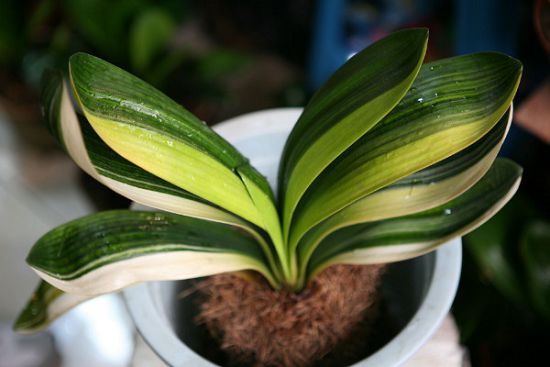The simplest orchid plant configuration, each layer of soil has different requirements.

The roots of orchids are fleshy, and the requirements for soil are relatively strict. the most common configuration of orchid plants is to ensure good permeability and drainage of soil. first of all, some similar coarse sand and coarse stones can be added to the bottom layer as water distribution layer, and nutrient-rich soil is mainly selected in the middle layer, similar to saprophytic soil, pine needle soil, humus soil, pond soil, peat soil or peat soil, the upper soil mainly plays a moisturizing role. You can choose water moss or foam blocks.
1. The simplest method for preparing orchid plants. 1. Bottom layer
Orchids are fleshy root flowers and plants, and there are high requirements for soil in the process of cultivation. Generally, the simplest orchid plant configuration is to ensure good air permeability, mainly to add some drainage layer at the bottom of the basin. Similar to coarse sand, coarse gravel, or broken bricks with larger particles can be used to make the soil more permeable and draining.
2. Middle level
Generally, the middle layer of plant material provides rich nutrients, so the middle layer of cultivated orchid plant material can choose nutrient-rich soil, such as humus soil, pine needle soil, humus soil, pond mud, peat soil or peat soil. This kind of soil contains a lot of minerals, which can effectively provide the nutrient needs of orchid roots.
3. Upper layer
The plant material in the upper layer mainly plays the role of moisturizing, and the soil with small particles should be selected as the best, such as foam block, pine leaf soil, water moss, peanut shell, tender branches and so on, which can not only increase the beauty of the basin soil, but also make the basin soil have good drainage. If the use of large particles of soil basin soil water retention is very poor, not conducive to the normal growth of roots.
Key points for the maintenance of orchids 1. Light and temperature treatment
Light is the key factor affecting the flowering of orchids. During spring and summer, it should be placed in a shaded sun place, or in an indoor ventilated window, and it should be turned into a pot every two weeks, so that the plants can receive light evenly, and they should receive more light during the cool autumn period. generally in about half a day, when the temperature is low, you can cover it with a layer of plastic film to prevent freezing.
2. Watering and moisturizing
Orchids do not have high requirements for moisture, and they are watered as little as possible at ordinary times. the air humidity in the rainy season is very high, so they should be moved to indoor maintenance, watering the soil in the morning and evening in summer, keeping the basin soil slightly wet, increasing the amount of water in autumn, and spraying frequently in dry seasons. keep the leaves moist for a long time, and water thoroughly in winter.
3. Nutrient supply
Orchids are fertilizer-loving plants, and they can blossom most beautifully under sufficient fertilizer. in the process of fertilization, nitrogen fertilizer should be applied as little as possible to avoid malnutrition. Liquid fertilizer can be applied every 2-3 weeks in spring and autumn, and fertilization should be carried out at night. At the same time, potassium dihydrogen phosphate can be sprayed on the leaves every 20 days or so.
- Prev

How to make the orchid draw arrows quickly, add alcohol or stimulate with temperature difference
How to make the orchid draw arrows quickly, add alcohol or stimulate with temperature difference
- Next

How to raise white orchids in autumn, watering and pruning in time
How to raise white orchids in autumn, watering and pruning in time
Related
- Is the orchid suitable for indoor use? Is it good for the body?
- How to prevent the empty root of orchids?
- What to do after the crab claw orchid is withered?
- Why are the leaves of orchids always yellow? Fertilizing and watering.
- Can the root of the gentleman orchid be saved if it is rotten?
- Diagnosis and treatment of cotton-blowing beetle insects in Cymbidium
- There is a way for a gentleman's orchid to rot.
- What is the most suitable temperature and humidity for the orchid?
- How to raise a gentleman's orchid? Cultivation techniques of Cymbidium
- How to prepare the nutritive soil for the cultivation of Cymbidium

